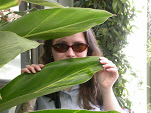 |
| Eastern Dobsonfly, Corydalus cornutus |
This year I have sighted them more often than in previous years, and I saw a similar comment on What's that bug? leading me to believe their population has been improving. In the larval stage, they are aquatic as well as predatory (and, if possible, more creepy looking), and likely owe any resurgence to the same source as the increasing numbers of frogs, eagles, etc. Though I'm sure the populations of none of these are what they once were, I think there are definite improvements. I'd like to think people are starting to take responsibility for water quality and habitat preservation, but it may be nothing more than the days of willy-nilly spraying of DDT is now far enough behind, allowing some ecological recovery. A great review article about dobsonflies on the Univeristy of Florida website mentions that dobsonflies have been suggested as a good indicator for environmental monitoring studies.
The article mentions above also explains many other interesting facts about the species. They spend 1-3 years as larva, living in clean water, under rocks and such, feeding on other insects. They then pupate about 3 weeks to reach their adult stage, shown above. As adults, they live 3-8 days to mate and finish out their life cycle. Seeing one, therefore is a rare treat, like seeing a luna moth. I feel exceptionally lucky to have seen this pair together.

No comments:
Post a Comment